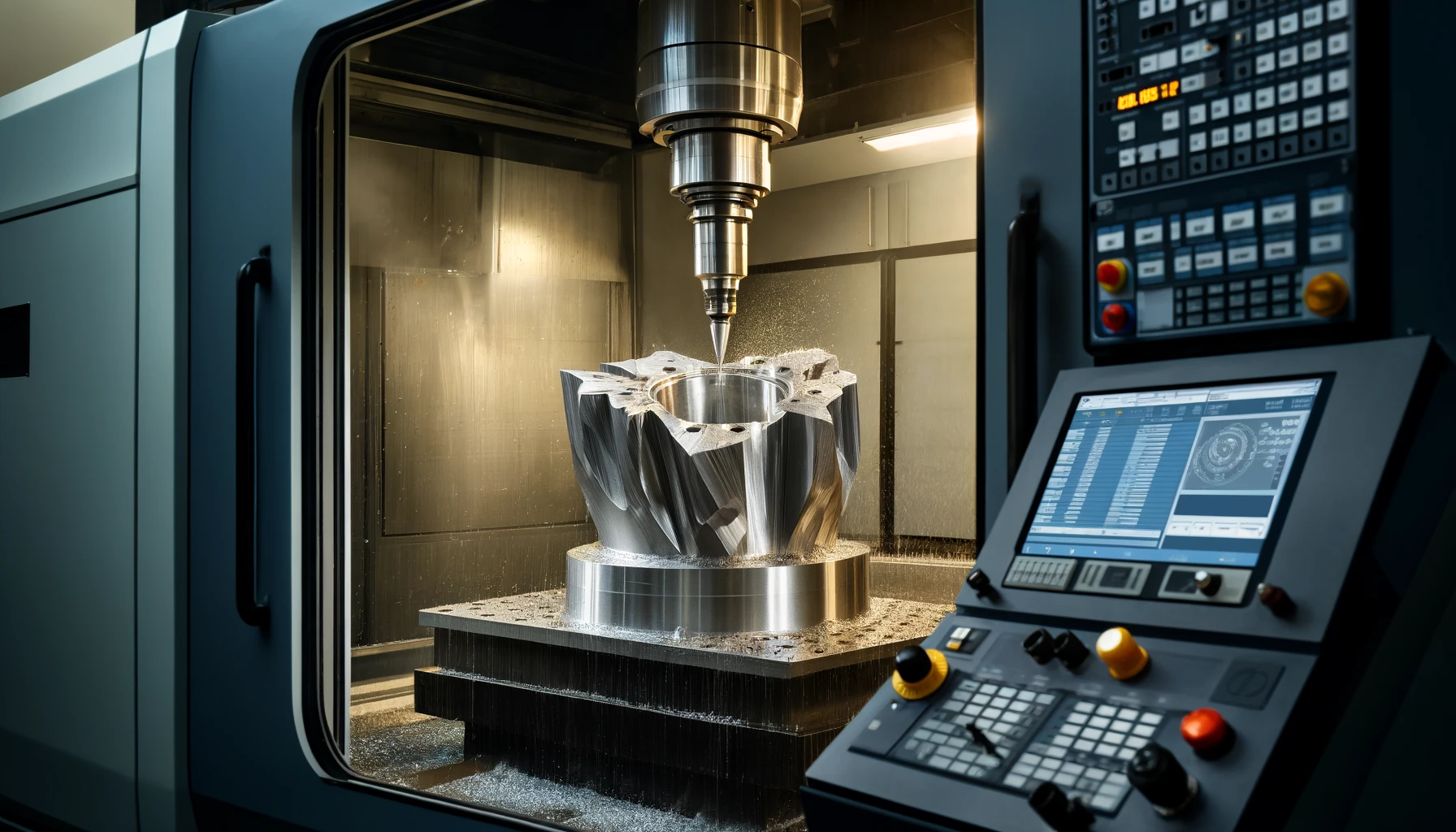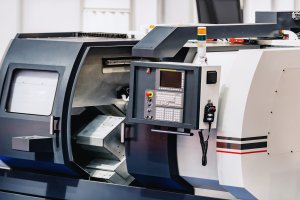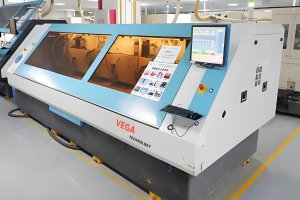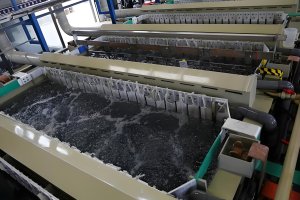Introduction to Dimensional Stability in CNC Machining
Dimensional stability is a critical aspect in CNC machining, especially when working with materials like stainless steel. It refers to the ability of a part to maintain its specified dimensions and tolerances throughout the manufacturing process and during its operational life. Achieving and maintaining dimensional stability is essential for ensuring the functionality, performance, and reliability of the final product.
China Online CNC Machining Services – Want.net
Stainless steel, known for its strength, corrosion resistance, and durability, is widely used in various industries, including aerospace, automotive, medical devices, and industrial equipment. However, machining stainless steel poses unique challenges due to its material properties. CNC machining, with its high precision and repeatability, is a preferred method for producing stainless steel parts with tight tolerances. This article explores the methods and techniques used in CNC machining to maintain dimensional stability in stainless steel parts.
What Are the Challenges in Maintaining Dimensional Stability with Stainless Steel?
Stainless steel presents several challenges that can affect dimensional stability during CNC machining. Understanding these challenges is crucial for implementing effective strategies to overcome them.
1. Thermal Expansion
Stainless steel has a relatively high coefficient of thermal expansion. This means that it expands and contracts significantly with temperature changes, which can lead to dimensional variations. Managing thermal expansion is critical, especially in high-precision applications.
2. Work Hardening
Stainless steel tends to work-harden during machining. This phenomenon occurs when the material becomes harder and more brittle as it is deformed, making subsequent machining operations more difficult and affecting dimensional accuracy.
3. Cutting Forces
The high cutting forces required to machine stainless steel can cause tool deflection and workpiece distortion, impacting dimensional stability. Selecting appropriate cutting parameters and tools is essential to minimize these effects.
4. Surface Finish
Achieving a high-quality surface finish on stainless steel parts can be challenging due to the material’s toughness and tendency to form built-up edges on the cutting tool. Poor surface finish can lead to dimensional inaccuracies and affect the performance of the part.
5. Heat Generation
The high heat generation during stainless steel machining can cause thermal expansion and affect the dimensional stability of the workpiece. Effective cooling and lubrication strategies are needed to manage heat and maintain accuracy.
How Does Tool Selection Affect Dimensional Stability?
Tool selection plays a crucial role in maintaining dimensional stability during the CNC machining of stainless steel. The choice of tool material, geometry, and coating can significantly impact the machining process and the final dimensions of the part.
Tool Material
Different tool materials offer varying levels of hardness, wear resistance, and thermal conductivity, all of which affect dimensional stability.
- Carbide Tools: Carbide tools are known for their high hardness and wear resistance, making them suitable for machining stainless steel. Their high thermal conductivity helps dissipate heat, reducing thermal expansion and improving dimensional stability.
- High-Speed Steel (HSS): HSS tools are less hard and wear-resistant than carbide but offer good toughness. They are suitable for specific stainless steel machining applications where lower cutting speeds are acceptable.
- Ceramic and CBN Tools: Ceramic and cubic boron nitride (CBN) tools provide excellent wear resistance and are used in high-speed machining operations. Their low thermal conductivity can help reduce heat generation at the cutting edge.
Tool Geometry
The geometry of the cutting tool, including the rake angle, clearance angle, and tool nose radius, influences the cutting forces, heat generation, and chip formation. Optimizing tool geometry is essential for achieving dimensional stability.
- Rake Angle: A positive rake angle reduces cutting forces and heat generation, minimizing tool deflection and workpiece distortion.
- Clearance Angle: Sufficient clearance angle prevents rubbing between the tool and workpiece, reducing heat generation and maintaining dimensional accuracy.
- Tool Nose Radius: A larger nose radius can improve surface finish and distribute cutting forces more evenly, enhancing dimensional stability.
Tool Coatings
Tool coatings, such as titanium nitride (TiN), titanium carbonitride (TiCN), and aluminum titanium nitride (AlTiN), can improve tool performance by reducing friction, increasing wear resistance, and providing thermal protection.
- TiN Coating: Provides good wear resistance and reduces friction, suitable for general stainless steel machining.
- TiCN Coating: Offers higher hardness and wear resistance than TiN, ideal for high-speed machining of stainless steel.
- AlTiN Coating: Excellent thermal stability and wear resistance, suitable for high-temperature applications.
Why Is Temperature Control Crucial in CNC Machining Stainless Steel?
Temperature control is critical in CNC machining of stainless steel due to the material’s high thermal expansion coefficient. Temperature fluctuations can lead to dimensional changes, affecting the precision and quality of the final product.
Coolant Management
Effective coolant management helps control the temperature of the cutting tool and workpiece during machining. Using the right type and amount of coolant can significantly reduce heat generation and thermal expansion.
- Flood Coolant: Provides continuous cooling and lubrication, reducing heat buildup and maintaining dimensional stability.
- Mist Coolant: Combines cooling and lubrication in a fine mist, suitable for high-speed machining operations.
- Cryogenic Cooling: Uses liquid nitrogen or carbon dioxide to cool the cutting tool and workpiece, effectively managing heat and improving dimensional stability.
Temperature Regulation Techniques
Implementing temperature regulation techniques in the machining environment can help maintain a stable temperature, ensuring dimensional accuracy.
Example: Temperature Regulation in Automotive Manufacturing
In an automotive manufacturing setting, precise temperature control systems were installed to regulate the machining environment. These systems included coolant management and air conditioning to maintain a stable temperature, ensuring the dimensional stability of machined parts. By maintaining a consistent temperature, the manufacturer was able to produce high-precision components that met stringent automotive standards.
Methods for Monitoring and Controlling Tool Wear
Tool wear is a critical factor affecting dimensional stability in CNC machining. Monitoring and controlling tool wear involves using advanced sensors and predictive maintenance techniques to ensure tools remain in optimal condition.
Tool Wear Monitoring
Modern CNC machines are equipped with sensors and monitoring systems that track tool wear in real-time. These systems can detect changes in cutting forces, vibration, and temperature, indicating tool wear.
Predictive Maintenance
Predictive maintenance involves using data from tool wear monitoring systems to predict when a tool needs to be replaced or reconditioned. This approach helps prevent unexpected tool failures and maintains dimensional accuracy.
Tool Wear Compensation
Advanced CNC machines can automatically compensate for tool wear by adjusting the tool path or cutting parameters. This compensation ensures that the final dimensions of the part remain within specified tolerances.
Table: Tool Wear Progression Over Time
A table showing the progression of tool wear over time can illustrate how regular monitoring and timely tool changes can prevent deviations in part dimensions. This data-driven approach helps in maintaining consistent quality throughout the production process.
| Time (Hours) | Cutting Speed (m/min) | Feed Rate (mm/rev) | Depth of Cut (mm) | Tool Wear (mm) |
|---|---|---|---|---|
| 0 | 120 | 0.1 | 1.0 | 0.00 |
| 10 | 120 | 0.1 | 1.0 | 0.02 |
| 20 | 120 | 0.1 | 1.0 | 0.04 |
| 30 | 120 | 0.1 | 1.0 | 0.07 |
| 40 | 120 | 0.1 | 1.0 | 0.10 |
| 50 | 120 | 0.1 | 1.0 | 0.13 |
| 60 | 120 | 0.1 | 1.0 | 0.17 |
| 70 | 120 | 0.1 | 1.0 | 0.21 |
How Does Fixture Design Influence Dimensional Stability?
Fixtures are essential for holding and positioning the workpiece during CNC machining. A well-designed fixture minimizes movement and vibration, which are critical for achieving precise dimensions.
Clamping Force
The clamping force applied to the workpiece must be sufficient to hold it securely without causing deformation. Excessive clamping force can distort the part, affecting dimensional accuracy.
Material
Fixtures made from materials with high rigidity and low thermal expansion, such as steel or aluminum, provide better stability and maintain the dimensional accuracy of the workpiece.
Design Complexity
Simpler fixture designs are generally more stable and easier to use. Complex designs may offer more flexibility but can introduce additional sources of error and instability.
Adjustability
Adjustable fixtures allow for fine-tuning of the workpiece position, enhancing precision and accommodating variations in part dimensions.
Vibration Damping
Fixtures with vibration damping features, such as rubber inserts or composite materials, help absorb vibrations during machining, improving dimensional stability.
Table: Fixture Design Parameters
| Parameter | Description | Impact on Stability |
|---|---|---|
| Clamping Force | Force applied to hold the workpiece | High force can deform parts |
| Material | Material of the fixture | High rigidity materials preferred |
| Design Complexity | Complexity of the fixture design | Simple designs are more stable |
| Adjustability | Ability to adjust the fixture | Enhances flexibility and precision |
| Weight | Weight of the fixture | Heavier fixtures provide stability |
| Thermal Stability | Ability to withstand temperature changes | Reduces dimensional changes |
| Vibration Damping | Ability to absorb vibrations | Improves part precision |
| Positioning Accuracy | Accuracy in positioning the workpiece | Critical for maintaining tolerances |
the workpiece | Critical for maintaining tolerances|
Advanced CNC Techniques for Enhancing Dimensional Stability
Advanced CNC techniques can significantly enhance the dimensional stability of stainless steel parts. These techniques involve sophisticated controls and processes that adapt in real-time to maintain precision.
High-Speed Machining
High-speed machining involves using higher cutting speeds and feed rates to reduce the time the tool is in contact with the workpiece. This reduces heat generation and tool wear, improving dimensional stability.
Cryogenic Machining
Cryogenic machining uses liquid nitrogen or carbon dioxide to cool the cutting tool and workpiece. This method effectively manages heat and prevents thermal expansion, maintaining dimensional accuracy.
Adaptive Control
Adaptive control systems use real-time data from sensors to adjust cutting parameters dynamically. These systems can compensate for variations in tool wear, material properties, and environmental conditions, ensuring consistent dimensional stability.
Case Study: High-Speed Machining in Aerospace Components
A case study in the aerospace industry shows how high-speed machining techniques were employed to manufacture stainless steel components with high dimensional stability. The use of specialized cutting tools and precise control systems allowed for the production of parts that met stringent aerospace standards. By optimizing cutting speeds and feed rates, the manufacturer was able to reduce heat generation and improve the overall accuracy of the parts.
The Role of Metrology in Ensuring Dimensional Accuracy
Metrology, the science of measurement, is critical in ensuring the dimensional accuracy of machined parts. Advanced metrology tools and techniques, such as coordinate measuring machines (CMMs) and laser scanners, provide precise measurements and feedback to adjust the machining process as needed.
Coordinate Measuring Machines (CMMs)
CMMs are widely used for inspecting and measuring complex geometries with high precision. They use probes to touch the surface of the part and collect dimensional data, which is then compared to the CAD model.
Laser Scanners
Laser scanners capture the entire surface geometry of the part by projecting a laser beam and recording the reflected light. This non-contact method is fast and highly accurate, making it suitable for measuring intricate shapes and surfaces.
Optical Comparators
Optical comparators use light and lenses to magnify the part’s profile, allowing for visual inspection and measurement against a standard template. They are useful for inspecting 2D profiles and detecting dimensional deviations.
Table: Comparison of Metrology Tools
| Metrology Tool | Measurement Accuracy | Speed of Measurement | Suitable Applications |
|---|---|---|---|
| Coordinate Measuring Machine (CMM) | ±0.001 mm | Moderate | Complex geometries |
| Laser Scanner | ±0.010 mm | High | Surface measurements |
| Optical Comparator | ±0.005 mm | Moderate | 2D profiles |
| Micrometer | ±0.001 mm | Low | Small dimensions |
| Digital Caliper | ±0.010 mm | Moderate | General use |
| Profilometer | ±0.002 mm | Moderate | Surface roughness |
| Interferometer | ±0.0001 mm | High | High-precision applications |
| Vision System | ±0.005 mm | High | Automated inspection |
By utilizing advanced metrology tools, manufacturers can ensure the dimensional accuracy of CNC machined stainless steel parts. Regular inspection and measurement allow for real-time adjustments to the machining process, maintaining the required tolerances and improving the overall quality of the final product.
Other Articles You Might Enjoy
- What Material Properties Need to Be Considered When CNC Machining Stainless Steel Flanges?
The CNC machining of stainless steel flanges requires a profound understanding of the material's properties to ensure high-quality, precision outcomes. This article delves into the critical material properties that impact…
- Fast CNC Machining Services for Stainless Steel Prototyping
CNC Machining and Stainless Steel in Prototyping Computer Numerical Control (CNC) machining is a critical process in the manufacturing sector, particularly for prototyping projects. It's an automated method that uses…
- Precision CNC Machining of Stainless Steel: Innovations and Best Practices in Aerospace Machining
Introduction: Precision CNC Machining and the Use of Stainless Steel Precision Computer Numerical Control (CNC) machining, a vital technology within the manufacturing industry, uses pre-programmed software to guide machinery towards…
- Stainless Steel vs. Aluminum in CNC Machining: Pros and Cons
CNC Machining: The Role of Stainless Steel and Aluminum Computer Numerical Control (CNC) machining is a groundbreaking method in manufacturing that involves precise computer commands to manipulate and control tools…
- How Does CNC Machining Achieve Precision Tolerances in Stainless Steel Parts?
The Importance of Precision Tolerances in Stainless Steel Parts Precision tolerances are the allowable limits of variation in a physical dimension. In CNC machining, particularly for stainless steel parts, achieving…
- CNC Machining Material Showdown: 304 vs. 316 Stainless Steel
CNC Machining: An Overview And Importance of Material Selection Computer Numerical Control (CNC) machining is a manufacturing process that uses pre-programmed computer software to dictate the movement of factory tools…






